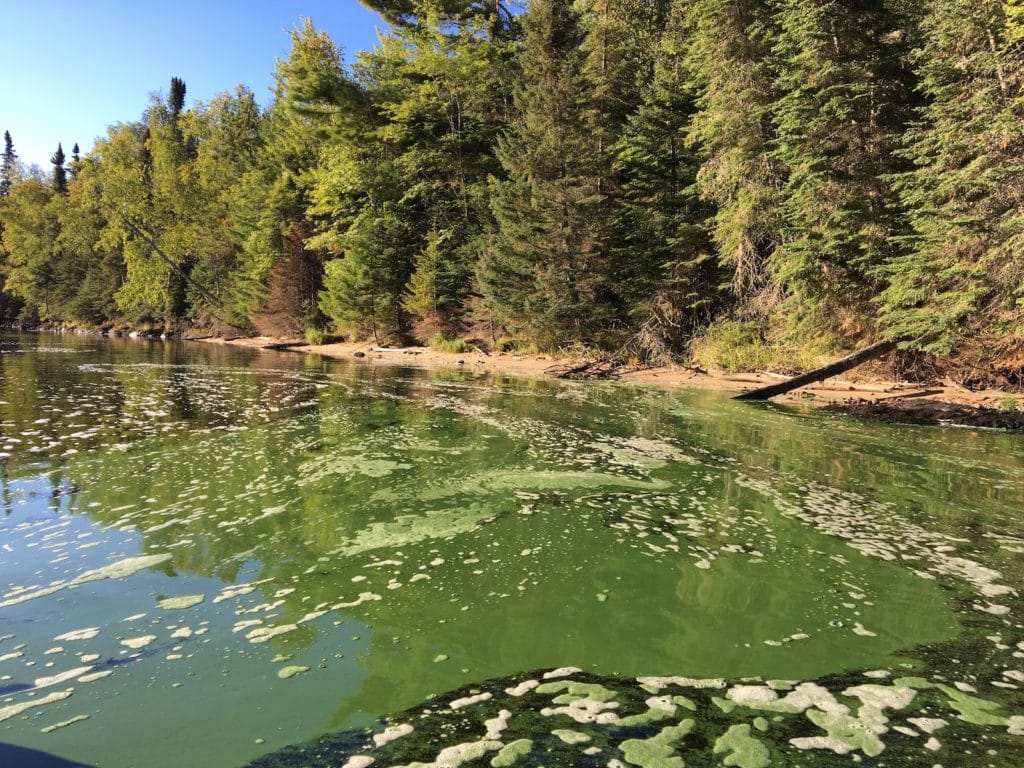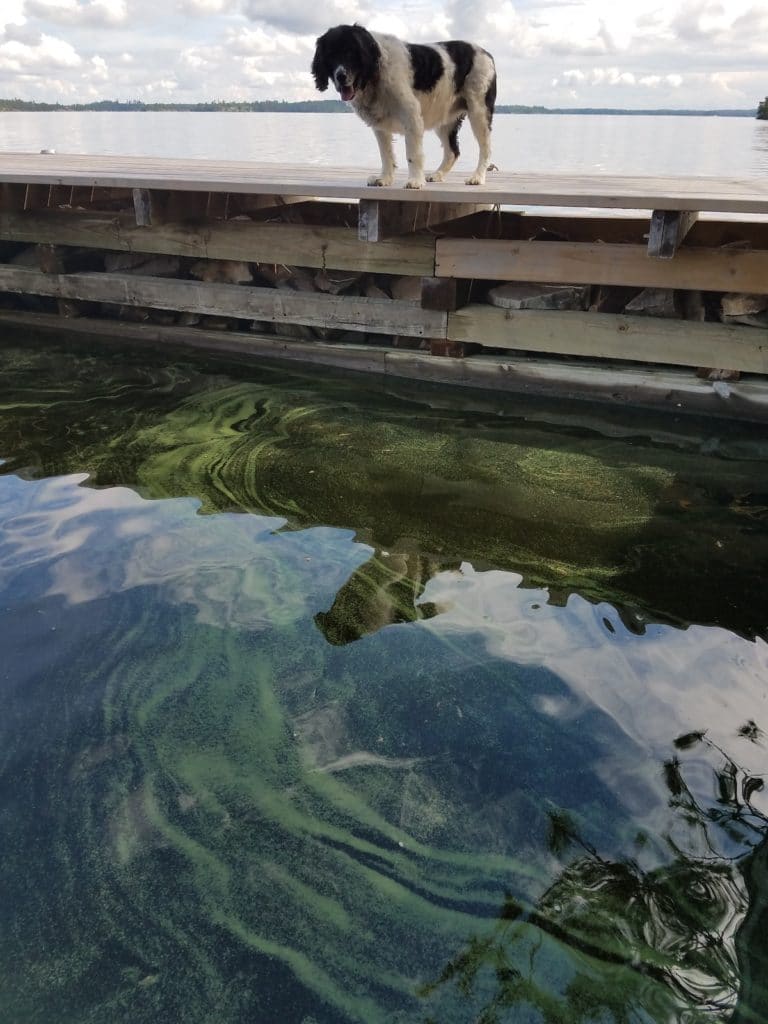
A bay on Kabetogama Lake in Voyageurs National Park has long seen large blooms of cyanobacteria — ancient organisms that are naturally present across the world, but which can cause big water quality problems when they become too abundant. Federal scientists published important new information about the issue.
Cyanobacteria are usually unnoticeable, but with enough nutrients, warmth, and other factors, they can burst into massive colonies. The organisms create toxic chemicals as a byproduct which can hurt or even kill people and pets. On Lake of the Woods to the west, these harmful toxins have killed multiple dogs that swam in its waters.
Sullivan Bay has experienced large visible blooms of cyanobacteria, the green scum is impossible to miss.
In 2016, state and federal scientists found new evidence that the toxins can be present before any sign of a cyanobacteria bloom. By sampling and testing the waters of Sullivan Bay during the entire open-water season, from ice-out to freeze-up, the researchers found it contained toxins prior to visual evidence.
They recently published their findings in the peer-reviewed journal Scientific Reports.
“Our team found that cyanobacteria and algal toxins were present at Kabetogama Lake’s Sullivan Bay both before and after the formation of visible algal blooms,” said lead author Victoria Christensen of the USGS. “Although toxins occurred at fairly low concentrations, the significance of this finding is that we can’t simply look at a clear water body and assume an absence of toxins.”
Sullivan Bay’s isolated location in a protected National Park made it a valuable experiment site. It is not affected by the forces that are usually thought to drive blooms of cyanobacteria: nutrient-rich runoff from agricultural and urban lands. Studying such a site shows the subtle ways other forces can work.

The Ash River, which flows into Kabetogama at the study site, is one of the few rivers in northeastern Minnesota designated as “impaired” by the Minnesota Pollution Control Agency. The river exceeds standards for oxygen levels, sedimentation, and clarity. It is scheduled for a plan to study and address the impairment beginning in 2021.
Because of the region’s largely undeveloped landscape dominated by forests and wetlands, most waters are in exceptionally good health. But not all.
“Kabetogama has relatively high nutrient concentrations for the region and is a notable northern lake plagued by cyanobacteria,” said Adam Heathcote of the St. Croix Watershed Research Station, a scientist not involved with this study but active in other northern lakes cyanobacteria research. “The causes behind these issues are often complicated, and ongoing studies are helping us understand what’s happening.”
The study’s authors point out that Kabetogama Lake is noticeably different than the other large lakes of the park, primarily Rainy, Namakan, and Sand Point Lakes, because Kabetogama rarely stratifies into a warmer upper layer and colder bottom waters. The other large lakes typically have such a “thermocline” all summer.
They also learned that two additional toxins were present in the water. The only toxin previously detected was microcystin, but the monitoring effort found both anatoxin-a and saxitoxin. The compounds can cause everything from skin irritation to liver and brain damage.

The findings also could be important for public health messages, which usually advise people to stay out of water when they see signs of cyanobacteria. The Centers for Disease Control & Prevention, the Minnesota Department of Health, and the Minnesota Pollution Control Agency have all promoted the guidance: “When in doubt, stay out.”
This and other recent studies have shown that water can be dangerous before there is any indication of an algae bloom. “The seasonal patterns we observed in this study tell us that sampling only when there is a visible algal bloom and sampling only for microcystin may miss some low-level toxin occurrence for which effects are not well understood,” Christensen said.
The researchers noted that cyanobacteria in northeastern Minnesota are not well studied, and public awareness about the issue is low.
“The knowledge gained from this study may be valuable to other researchers and resource managers, who want to better predict, manage, and mitigate the occurrence of toxic cyanobacterial blooms,” the article says. Pointing out how low levels of toxins can be present in waters that don’t show any signs of a cyanobacteria bloom, the scientists say it’s also important to better understand the effect of long-term, low-level exposure to the compounds. While the immediate health effects are relatively well-known, sustained exposure to small amounts of the toxins may have different impacts for people, wildlife, and the entire ecosystem.
More information:
- Christensen, V.G., Maki, R.P., Stelzer, E.A. et al. Phytoplankton community and algal toxicity at a recurring bloom in Sullivan Bay, Kabetogama Lake, Minnesota, USA. Sci Rep 9, 16129 (2019) doi:10.1038/s41598-019-52639-y

